
Purpose This is to provide essential data for training necessary for sweeping through the analysis of muscle activity generated at this time and how much sweeping and what trajectory moves the stone when the movement of the stone is controlled through sweeping. Methods To check and record the distance between the stones by checking the stop position of the stone made by sweeping each section, the length (progress distance) and width (progress direction) were recorded using a reference table and a record preparation table. With the EMG attached, a total of 60 sweeps were made 20 times each from the beginning of the section to the end of the section. Sweeping subjects were asked to sweep as much as possible under the same conditions in all three sections. Results As a result of the study, the muscle mobilization patterns of the 1st and 2nd sections of the stone with the faster speed and the 3rd section with the stone's slower speed appeared differently. It was confirmed that the sweeping motion of curling is a motion that is used evenly among the muscles of the upper extremity, and it can be verified that it is a suitable item for the development of upper body muscles. Also, the right deltoid's muscle activity rate during push and the right triceps brachii during pull was high. Conclusion Each section of the stone's sweeping effect is an exercise that has many variables, such as changes in atmospheric temperature and humidity, changes in ice temperature, temperature-size-number of pebbles, and the edge state-resilience of stones, etc. It is judged that experience can cope with these variables and requires training.

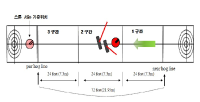

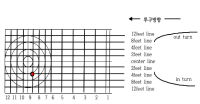

Purpose The purpose of this study is to investigate the characteristics of the winners and the losers of curling games to provide the winner strategies for the curling stakeholder. Methods For this study, data was collected from 2014 Sochi Winter Olympics web-site(http://sochi2014.curlingevents.com), which covers 199 games in total. Using the collected data, we extracted additional data such as the shot types and accuracy per players, team average score per end, whether or not with hammer per end and so on. and then a Chi-square test in statistic package SPSS 23.0 was used. The statistical significance was considered with p< 0.05. Results As a result, it was found that there were statistically significant difference between winners and losers of curling game on the shot type and accuracy(Draw, Front and Clearing). It was also found that there was not statistically significant between winners and losers about the number of blank end per end. It was found that 9th end average score was relatively lower than the other end in both the winners and the losers. It was found that the characteristics of the winners tends to be successful in more point from 5th end to 8th end with hammer and steal without hammer. Conclusion In conclusion, the strategies to win the curling game is to improve the shot performance of Lead and Skip, to organize the operation sequence for the successful blank end, and to develop the database and software in curling.



This study has analyzed 33 domestic games and 26 overseas games by targeting women curling teams of home and abroad, and looked into what main performance variables are, how level differences of domestic team appear, and from which variables differences between winning team and defeated team come out in overseas teams. Also, main strategies has been suggested that are used most commonly for kick-off offense and latter offense, blank strategy in order to prepare countermeasures, and digital media DB has been constructed that can utilize proper countermeasures easily and simply, and a model has been proposed for predicting victory/defeat. To accomplish such goal, a variance analysis has been carried out by dividing domestic teams into each level after calculating frequency and ratio with SPSS18.0, and t-test analysis has been carried out by overseas teams. Also, the accuracy of victory/defeat classifications has been suggested by using an artificial neural networks method. As a result, a lot of technical proficiency differences have appeared among Class A(upper rank), Class B(middle rank), and Class C(lower rank) in domestic teams. The ‘Guard’ which is an aggressive variable has turned out to be used more in upper and middle teams than in lower team, and the ‘Tab Back’ has been used more in upper rank than in lower rank. Furthermore, regarding the average comparison on victory/defeat in international games, victory teams have more significant difference(p<.05) than defeated teams in accuracy of shot techniques and strategy accomplishing abilities, and victory teams have been turned out to use less ‘Drew’ and more ‘Take’ than defeated teams significantly in Drew and Take’ technique variable. Finally, the accuracy of a prediction model has been 91.7% for learning and 92.9% for the test result to predict the victory/defeat in international games through the artificial neutral network analysis. The prediction accuracy of domestic games was 81.0% for learning and 71.4% for the test.


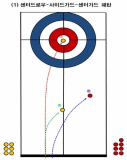

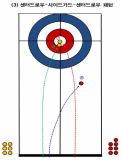
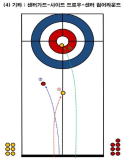

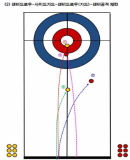
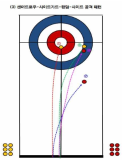
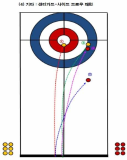
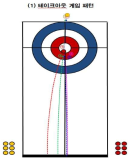
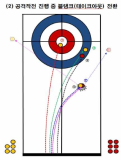

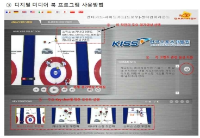

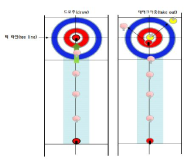
In this paper, we tried to find out the difference of CoM displacement, CoM velocity and Foot-pressure between draw motion and takeout motion in curling’s delivery motion. To do this, we experimented for 10 female athletes of curling national team(all athletes are in her 20th~30th ages) to carry out draw motion and takeout motion from backline to near hogline in state of speed limit. The limited speed was 3.80~3.90 sec for draw and 2.97~3.07 sec for takeout. From the experiments, we obtained the result like followings. 1. Draw motion is more increase than takeout motion in displacement of horizontal direction of CoM displacement. 2. Takeout motion is more increase than draw motion in displacement of vertical direction of CoM displacement. 3. Takeout motion is faster than draw motion in both of horizontal and vertical direction of CoM max. velocity. 4. Takeout motion is higher than draw motion in pressure of fore-foot and mid-foot of foot-pressure 5. Draw motion is higher than takeout motion in pressure of fore-foot and mid-foot of foot-pressure These result means that the characteristics of techniques for draw motion and takeout motion is differ from each other and it is necessary to take different training protocol individually to enhance athletes’s performance. And further research will contains another things like that the pursuit of curling stone’s rut by various delivery techniques

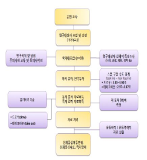


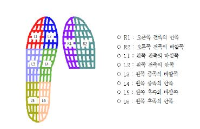



Purpose The purpose of this study was (1) to develop and to apply flipped learning strategies in Physical Education(PE) classes based on Sportscasting Model and (2) to examine the responses of students after PE lesson. Methods Participants were 10th high school students(N=216, male=115, female=101) in high school. Instruction strategies of flipped learning was developed after theoretical investigation, and the unit plans for curling and instructional materials were developed and applied. Open-ended questionnaires and in-depth interviews were used to collect the data. Qualitative content analysis combined with of structures in lesson was used to analyze the data. Results Results showed that (1) 11 instruction strategies of flipped learning were developed, (2) and the unit plan combining out-of class activities and in-class activities organically based on Sportscasting Model and instructional materials for unit of curling were developed and applied. In step of sportscasting, forcing relationship method-sportscasting based on the survey of students was developed and applied. (3) And 31 factors of Sportscasting Model and 15 factors of flipped learning were drawn from the analysis of questionnaires and interviews. Conclusion And to conclude, this research has a value of early study to develop and apply instruction strategies of flipped learning, the unit plan and instructional materials for combining Sportscasting Model with flipped learning organically. Discussions were provided in terms of the development of flipped learning applied in PE classes and responses of students.

The aim of this study is to analyze the correlation between per capita GDP and sports items' demand and to estimate the income elasticities of sports items' demand based on the International Social Survey Programme: Leisure Time and Sports - ISSP 2007 of the GESIS(Leibniz-Institute for the Social Sciences, Germany). The facts found from the analyses are as follows; First, in general, when the correlation coefficient of a particular sports item turns out to be both positive and statistically significant, the item can be interpreted to have a good possibility to be a luxury goods and when the coefficient is ascertained to be both negative and statistically significant, the item can be inferred to have a considerable chance to be an inferior goods. In this study, other team sports(excluding basketball, soccer, volleyball, baseball etc.), squash, walking/trekking/climbing, boat sports, hunting/fishing, horse riding/horse racing, motor sports, shooting, and snow sports were confirmed to show a luxury goods' features and basketball, soccer, volleyball, athletics, and martial arts were identified to have an inferior goods' characteristics. Second, similar to the results of the correlation analysis, in the income elasticities estimation, cockfighting appeared to be an inferior goods and other team sports, squash, walking/trekking/climbing, bowling/curling/bocce, boat sports, darts, hunting/fishing, golf/minigolf, horse riding/horse racing were proved to be a luxury goods.